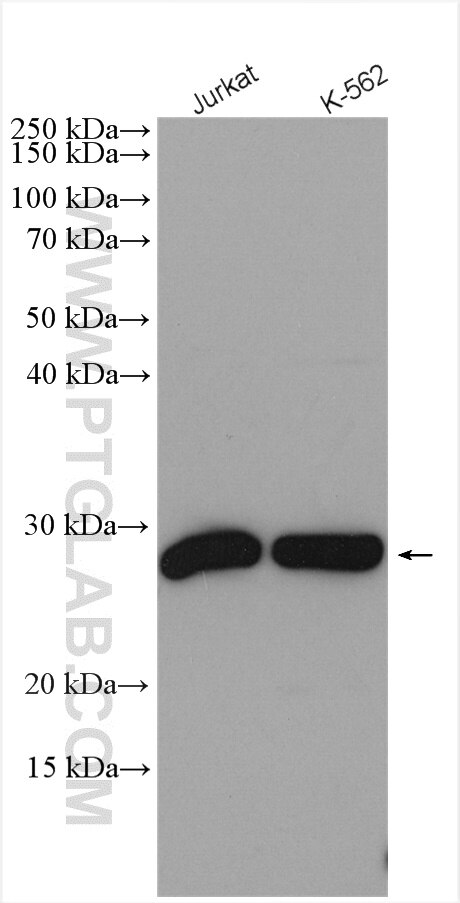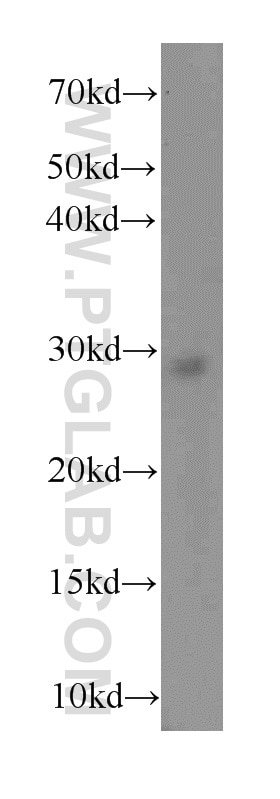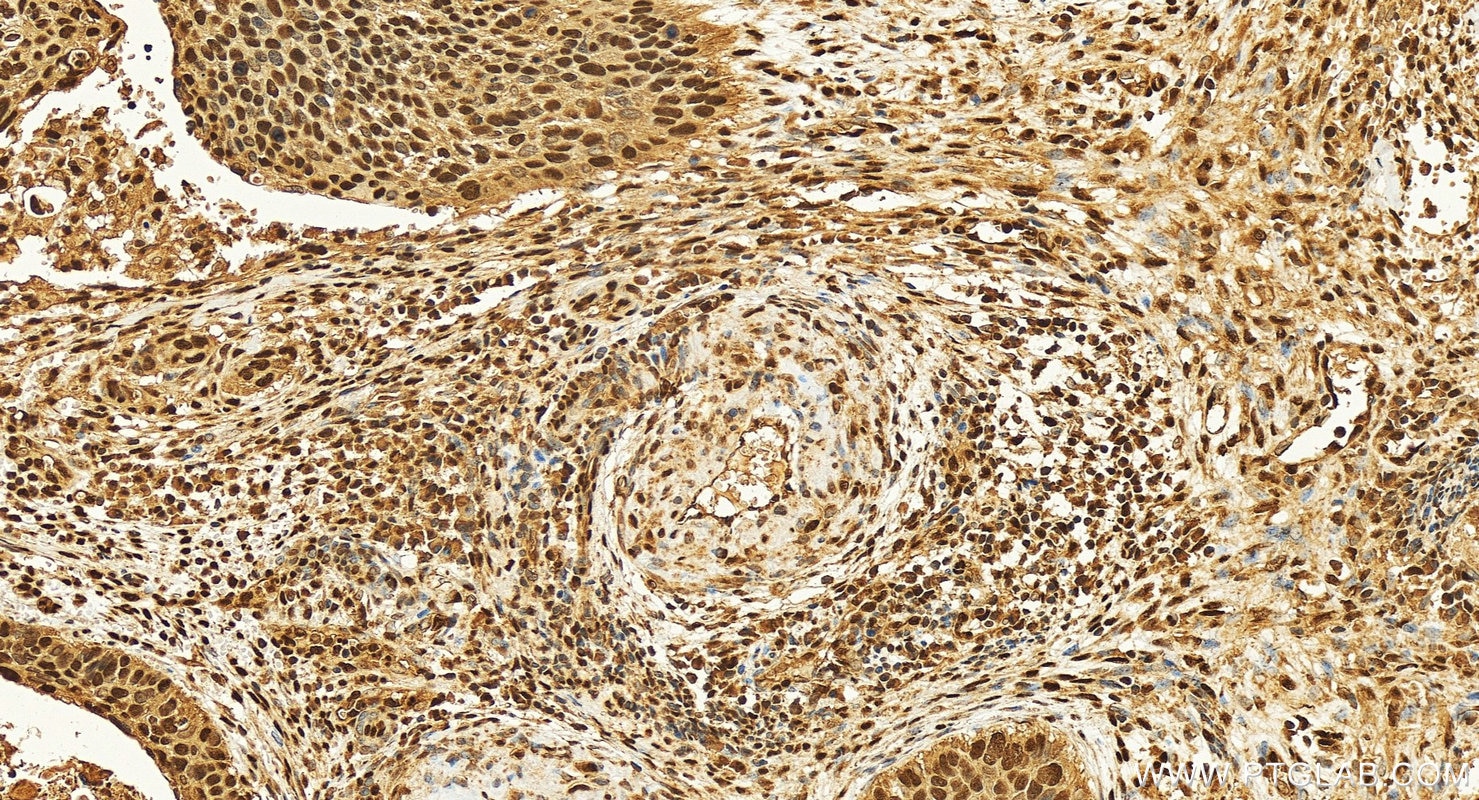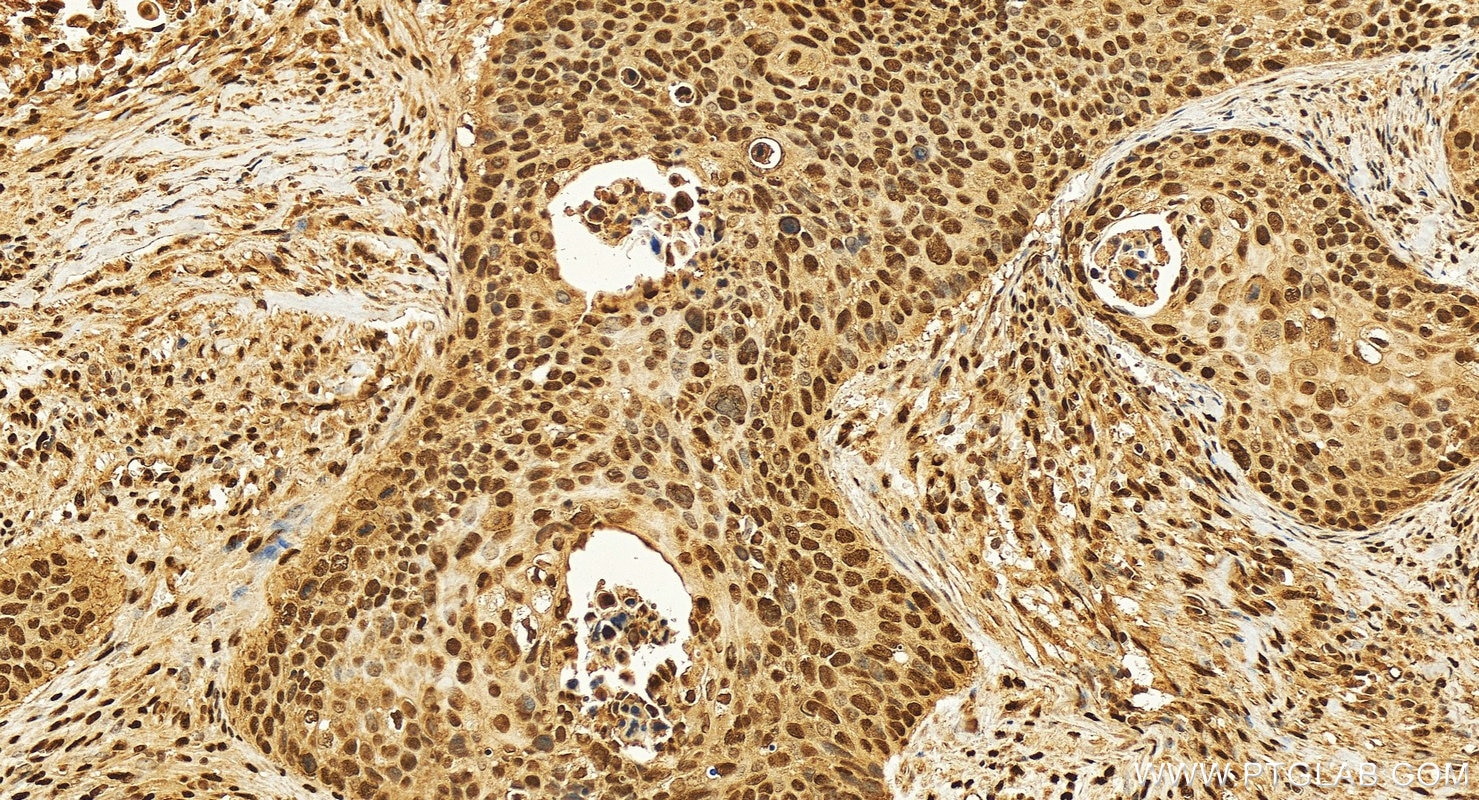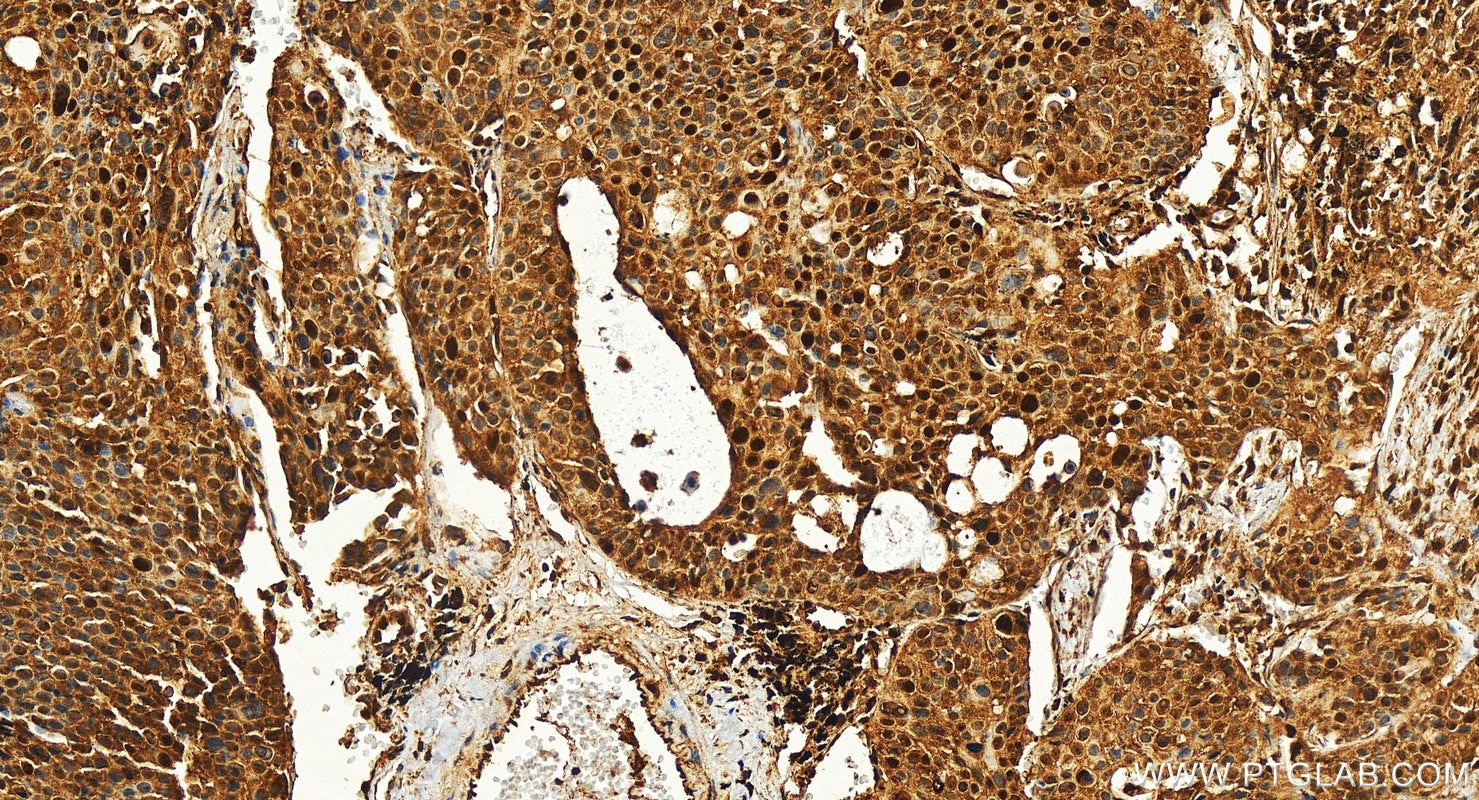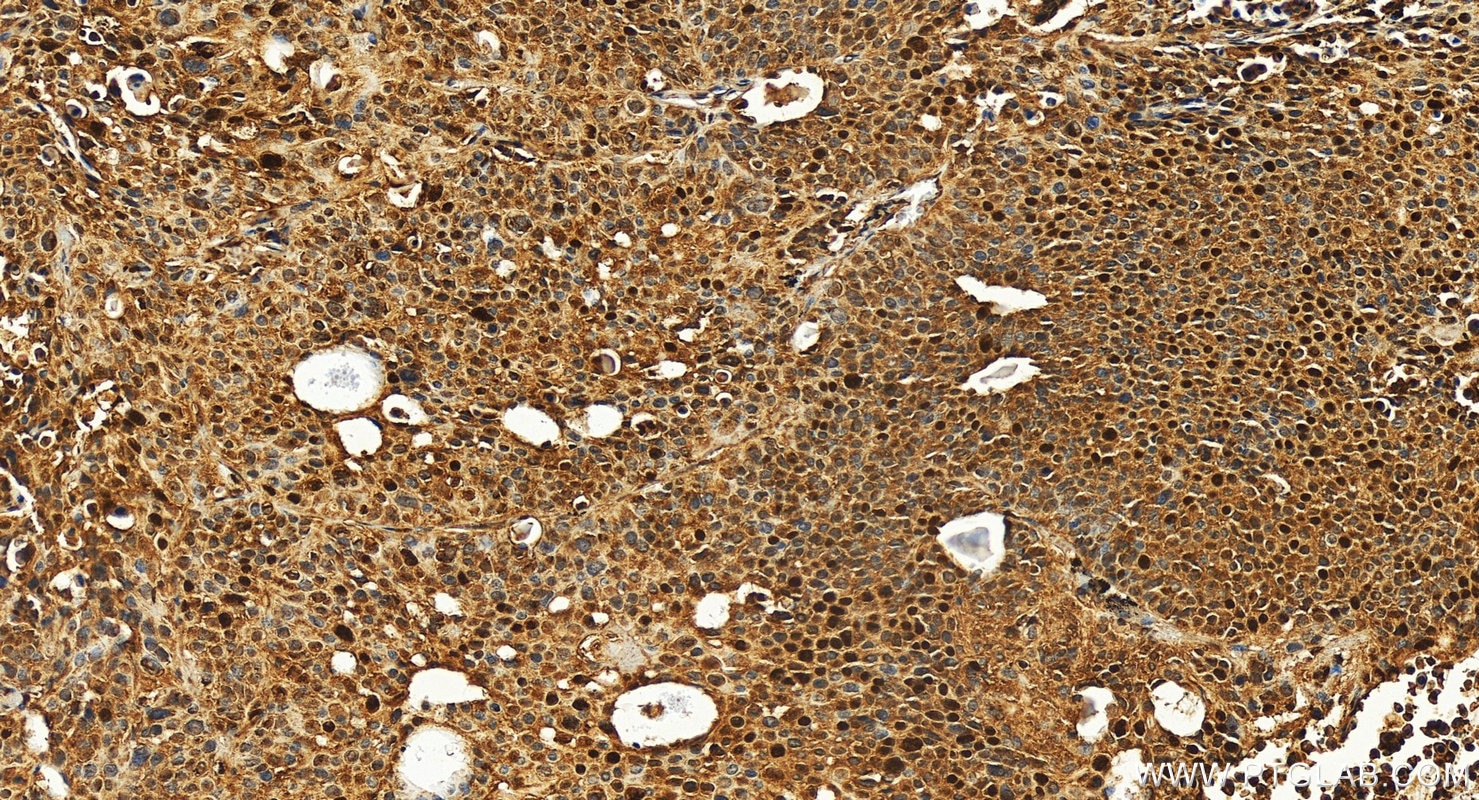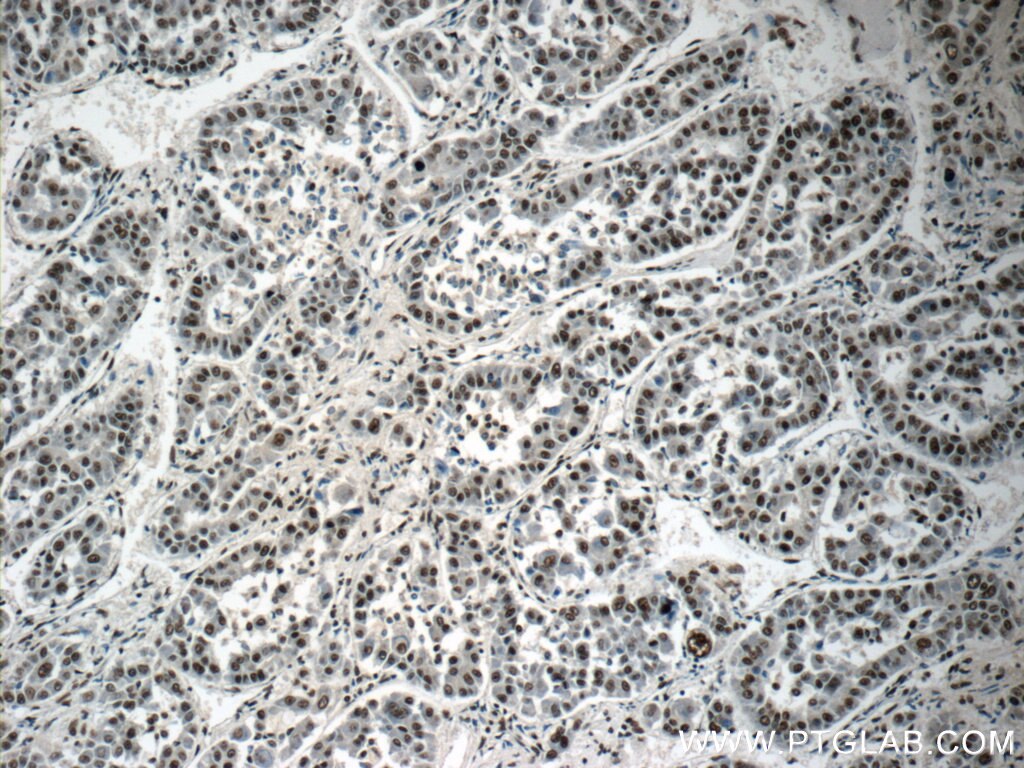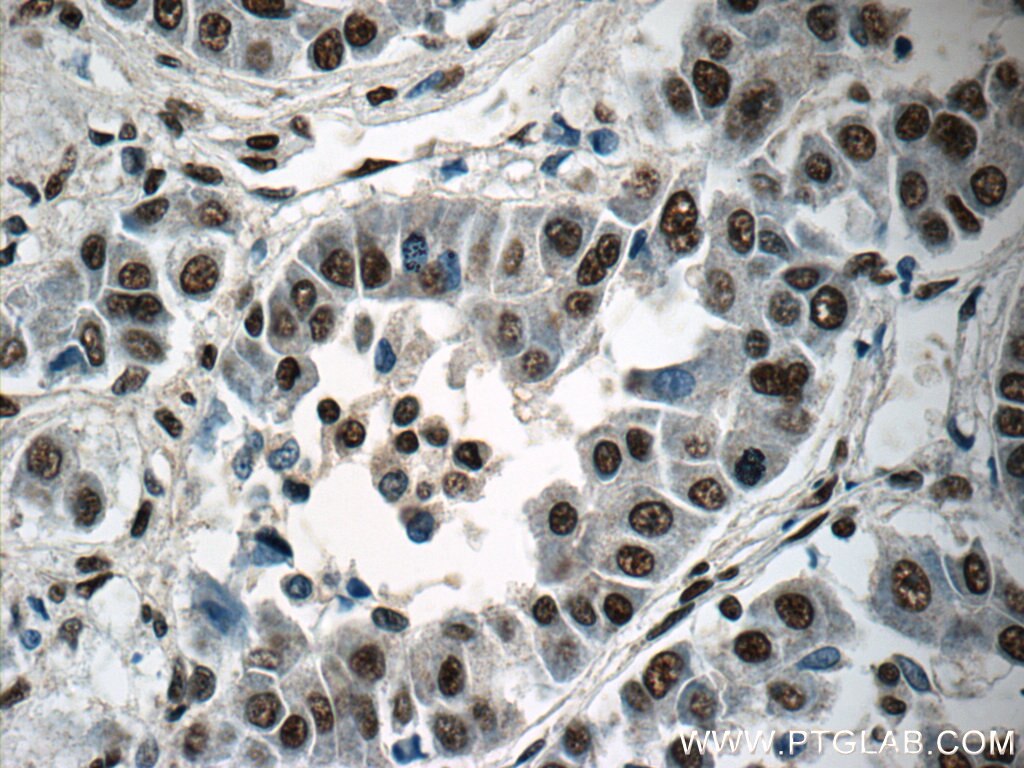- Phare
- Validé par KD/KO
Anticorps Polyclonal de lapin anti-SNRPB
SNRPB Polyclonal Antibody for WB, IHC, ELISA
Hôte / Isotype
Lapin / IgG
Réactivité testée
Humain et plus (1)
Applications
WB, IHC, IP, ELISA
Conjugaison
Non conjugué
N° de cat : 16807-1-AP
Synonymes
Galerie de données de validation
Applications testées
| Résultats positifs en WB | cellules Jurkat, cellules K-562 |
| Résultats positifs en IHC | tissu de cancer du col de l'utérus humain, tissu de cancer du foie humain, tissu de cancer du poumon humain il est suggéré de démasquer l'antigène avec un tampon de TE buffer pH 9.0; (*) À défaut, 'le démasquage de l'antigène peut être 'effectué avec un tampon citrate pH 6,0. |
Dilution recommandée
| Application | Dilution |
|---|---|
| Western Blot (WB) | WB : 1:500-1:2000 |
| Immunohistochimie (IHC) | IHC : 1:50-1:500 |
| It is recommended that this reagent should be titrated in each testing system to obtain optimal results. | |
| Sample-dependent, check data in validation data gallery | |
Applications publiées
| KD/KO | See 2 publications below |
| WB | See 3 publications below |
| IHC | See 4 publications below |
| IP | See 2 publications below |
Informations sur le produit
16807-1-AP cible SNRPB dans les applications de WB, IHC, IP, ELISA et montre une réactivité avec des échantillons Humain
| Réactivité | Humain |
| Réactivité citée | Humain, souris |
| Hôte / Isotype | Lapin / IgG |
| Clonalité | Polyclonal |
| Type | Anticorps |
| Immunogène | SNRPB Protéine recombinante Ag10298 |
| Nom complet | small nuclear ribonucleoprotein polypeptides B and B1 |
| Masse moléculaire calculée | 234aa,25 kDa; 285aa,30 kDa |
| Poids moléculaire observé | 25-30 kDa |
| Numéro d’acquisition GenBank | BC003530 |
| Symbole du gène | SNRPB |
| Identification du gène (NCBI) | 6628 |
| Conjugaison | Non conjugué |
| Forme | Liquide |
| Méthode de purification | Purification par affinité contre l'antigène |
| Tampon de stockage | PBS with 0.02% sodium azide and 50% glycerol |
| Conditions de stockage | Stocker à -20°C. Stable pendant un an après l'expédition. L'aliquotage n'est pas nécessaire pour le stockage à -20oC Les 20ul contiennent 0,1% de BSA. |
Informations générales
SNRPB (Small Nuclear Ribonucleoprotein Polypeptides B and B1) is a core component of the spliceosome, a complex molecular machine that plays a critical role in pre-mRNA splicing. This process is essential for the removal of introns and the joining of exons to produce mature mRNA molecules.
Protocole
| Product Specific Protocols | |
|---|---|
| WB protocol for SNRPB antibody 16807-1-AP | Download protocol |
| IHC protocol for SNRPB antibody 16807-1-AP | Download protocol |
| Standard Protocols | |
|---|---|
| Click here to view our Standard Protocols |
Publications
| Species | Application | Title |
|---|---|---|
Elife Type I and II PRMTs inversely regulate post-transcriptional intron detention through Sm and CHTOP methylation. | ||
Cell Death Dis SNRPB promotes the tumorigenic potential of NSCLC in part by regulating RAB26.
| ||
Ann Med SNRPB and CEP290, predicting the prognosis of diffuse large B cell lymphoma and associated with tumour immune microenvironment | ||
Aging (Albany NY) SNRPB promotes the progression of hepatocellular carcinoma via regulating cell cycle, oxidative stress, and ferroptosis | ||
Oncogene The splicing factor SNRPB promotes ovarian cancer progression through regulating aberrant exon skipping of POLA1 and BRCA2
| ||
Adv Sci (Weinh) PRMT5 Maintains Homeostasis of the Intestinal Epithelium by Modulating Cell Proliferation and Survival |
